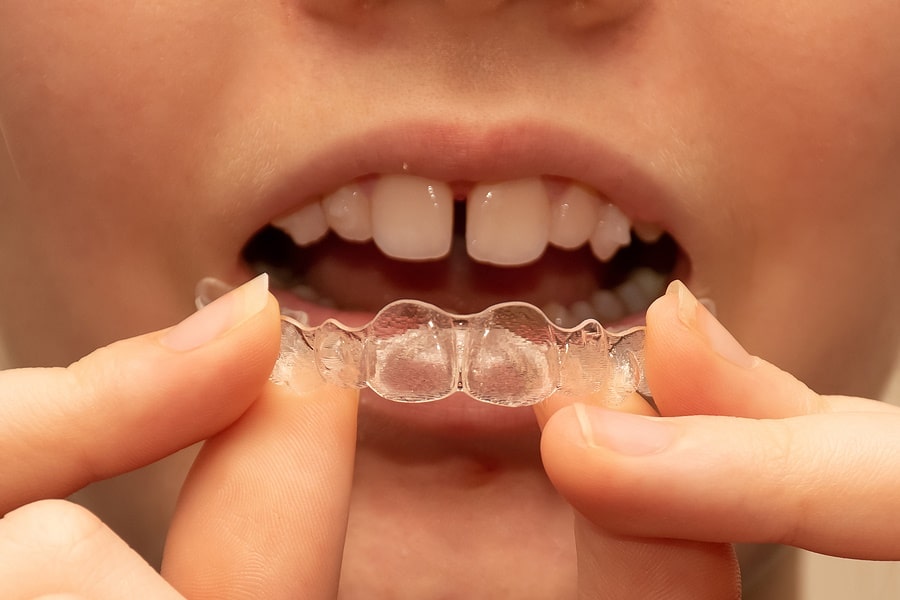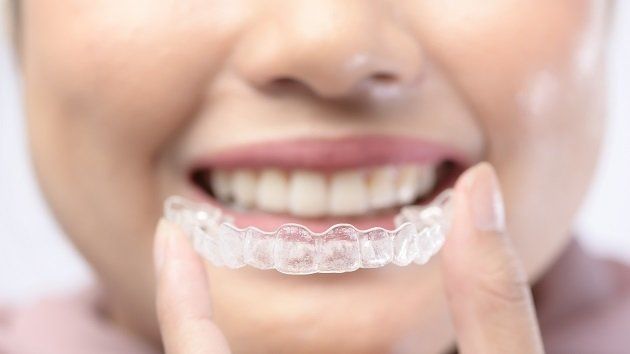Success Stories: How Invisalign Changed Lives and Boosted Confidence
Success Stories: How Invisalign Changed Lives and Boosted Confidence
Blog Article
Invisalign vs. Traditional Dental braces: Which Option Is Right for You?
When considering orthodontic treatment, the choice in between Invisalign and conventional dental braces presents several crucial elements that merit cautious assessment. Invisalign provides a discreet choice with detachable aligners, while traditional braces give an extra visible yet efficient option for severe misalignment.
Summary of Therapy Options

In contrast, traditional braces are composed of metal braces and cords that are adhered to the teeth. This method applies constant pressure over time to achieve alignment. While efficient for intricate orthodontic concerns, traditional braces call for normal check outs for changes and can posture obstacles in keeping oral health due to the difficulty of cleansing about cables and braces.
Both choices have their advantages, and the selection typically depends upon particular dental problems, lifestyle choices, and person compliance. Inevitably, speaking with an orthodontic professional is crucial for identifying the most suitable treatment strategy tailored to individual needs. Recognizing the nuances of each alternative can considerably influence the total success of orthodontic therapy.
Visual Considerations
A significant aspect affecting the choice in between Invisalign and conventional dental braces is the aesthetic charm each treatment supplies. Invisalign aligners are crafted from clear plastic, making them essentially undetectable when put on.
In comparison, standard braces include steel braces and wires, which can be a lot more obvious. While developments in orthodontic technology have actually brought about the growth of smaller brackets and tinted elastics, traditional dental braces still maintain a more obvious account. For some people, the visibility of dental braces may prevent them from seeking required treatment.
Ultimately, the option between Invisalign and conventional braces may depend upon personal choices concerning looks. Clients who focus on discernment commonly favor Invisalign, while those who are less worried regarding presence may go with typical dental braces. Recognizing the visual effects of each option is essential for making a notified decision that aligns with one's way of life and choices.
Convenience and Convenience

In regards to convenience, Invisalign aligners are removable, enabling people to enjoy their favored foods without restriction and keep ideal dental health. Brushing and flossing are streamlined, as the aligners can be obtained throughout these regimens, whereas traditional dental braces call for cautious steering around cables and brackets.
In addition, Invisalign's progressive system allows for fewer orthodontic check outs. Clients normally get several sets of aligners at as soon as, which can improve the therapy process and decrease time invested in the orthodontist's chair. On the other hand, conventional dental braces require routine adjustments, making them much less practical for those with active timetables. Invisalign. Overall, the comfort and benefit of Invisalign make it an appealing option for numerous individuals looking for orthodontic therapy.
Therapy Duration and Efficiency
While both Invisalign and conventional braces are reliable in fixing dental imbalances, the duration of therapy can vary substantially in between both choices. Usually, Invisalign treatment can take anywhere from 12 to 18 months, depending upon his explanation the intricacy of the situation. news The clear aligners work by slowly changing teeth right into their desired positions, and regular follow-ups with an orthodontist aid make sure development stays on track.
On the other hand, conventional braces frequently call for a longer commitment, normally varying from 18 months to 3 years. This is due to their set nature and using brackets and wires, which can be much more reliable for complicated cases and serious misalignments (Invisalign). The therapy performance of standard dental braces is well-documented, as they enable exact changes and better control over tooth activity
Ultimately, the option between Invisalign and typical braces might rest on both the expected therapy period and the certain dental concerns available. Consulting with an orthodontist is essential, as they can supply customized recommendations based on private requirements, ensuring the picked approach aligns with wanted end results and timeframes.
Expense Contrast and Insurance Policy Alternatives
Price plays a significant duty in the decision-making process for people taking into consideration orthodontic therapy, whether opting for Invisalign or conventional braces. Usually, the expense of Invisalign varieties from $3,000 to $8,000, while traditional dental braces usually set you back in between $2,000 and $6,000. Elements influencing these prices include the intricacy of the case, the period of treatment, and geographical location.
Numerous dental insurance policy strategies give partial coverage for orthodontic therapies, however the specifics can vary commonly. Generally, conventional dental braces may be a lot more often covered by insurance policy strategies contrasted to Invisalign, which some insurance providers categorize as an aesthetic treatment.
Furthermore, several orthodontic techniques offer flexible layaway plan, making both therapy choices much more easily accessible. Individuals must ask about prospective funding options and discounts for ahead of time payments. Assessing the total expense, including insurance coverage benefits and payment strategies, is essential for making an educated decision that straightens with both aesthetic preferences and budget factors to consider.

Verdict
In recap, the selection in between Invisalign and typical dental braces pivots on several aspects, including visual choices, comfort, therapy duration, and price. Invisalign offers a discreet, removable alternative that promotes dental hygiene and nutritional versatility, while traditional braces may be more suitable for complex dental concerns and usually come at a lower cost factor. Eventually, assessment with an orthodontist is important to examine specific conditions visit here and identify one of the most proper treatment alternative for accomplishing optimum dental positioning.
When taking into consideration orthodontic therapy, the selection in between Invisalign and standard braces provides a number of crucial factors that merit mindful assessment.Contrasting Invisalign and conventional braces exposes distinctive therapy choices for orthodontic modification.While both Invisalign and standard braces are efficient in dealing with oral imbalances, the period of therapy can differ substantially between the 2 choices.Cost plays a considerable role in the decision-making procedure for individuals considering orthodontic therapy, whether opting for Invisalign or conventional dental braces.In recap, the selection between Invisalign and traditional braces hinges on several variables, including aesthetic preferences, comfort, therapy duration, and expense.
Report this page